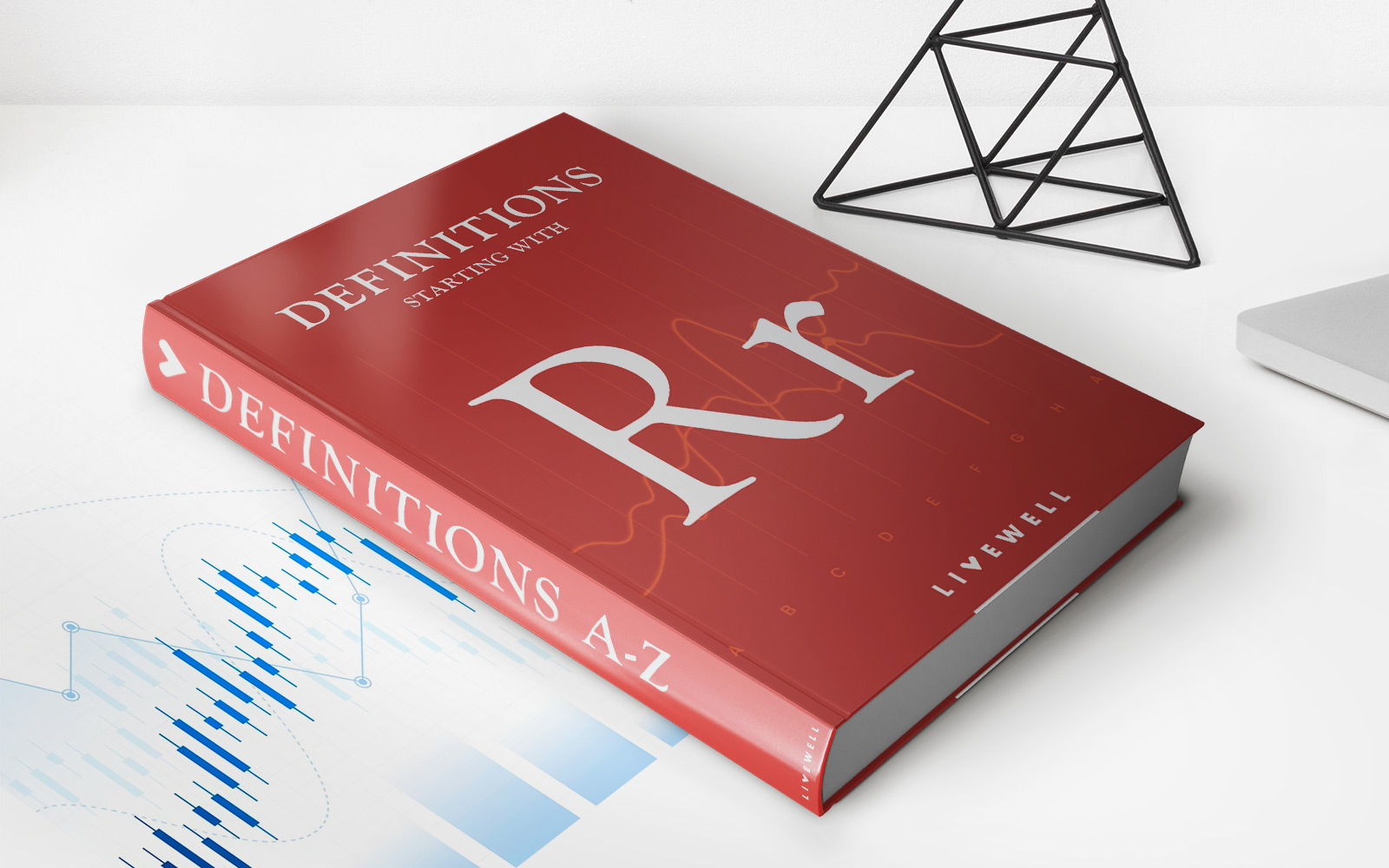Home>Finance>What Is A 1099 Form From Financial Education Services?


Finance
What Is A 1099 Form From Financial Education Services?
Modified: January 5, 2024
Discover what a 1099 form is and how it relates to your finances. Gain financial education and insights with Financial Education Services.
(Many of the links in this article redirect to a specific reviewed product. Your purchase of these products through affiliate links helps to generate commission for LiveWell, at no extra cost. Learn more)
Table of Contents
Introduction
Welcome to Financial Education Services! In this article, we will explore the intricacies of a 1099 form and how it relates to your financial obligations. Whether you are a business owner, freelancer, or independent contractor, understanding the nuances of the 1099 form is essential to effectively managing your finances and ensuring compliance with tax regulations.
The 1099 form is a document that reports income received from various sources other than traditional employment. These sources can include self-employment income, rental income, interest, dividends, and more. If you have received income from any of these non-employee sources, it is likely that you will receive a 1099 form from the entity that paid you.
While the 1099 form may seem daunting at first, it serves an important purpose. It ensures that the income you receive is properly documented and reported to the Internal Revenue Service (IRS). By accurately reporting your income, you can avoid potential penalties and discrepancies in your tax filings.
In this article, we will delve into the purpose of the 1099 form, its recipients, and how to correctly report the income reflected on it. We will also highlight common mistakes to avoid to ensure a smooth tax filing process.
So, whether you are a freelancer who receives income through multiple clients, a landlord who rents out properties, or an investor who earns dividends, buckle up and get ready to demystify the 1099 form!
What is a 1099 Form?
A 1099 form is an IRS tax document that reports income received from sources other than traditional employment. The form is named after the specific section of the Internal Revenue Code that requires it to be filed.
There are several types of 1099 forms, each corresponding to a specific type of income. The most common types include:
- 1099-MISC: This form is used to report miscellaneous income, including payments made to independent contractors, freelancers, and self-employed individuals.
- 1099-INT: This form reports interest income earned from various sources such as bank accounts, certificates of deposit (CDs), or loans.
- 1099-DIV: This form is used to report dividends received from investments in stocks, mutual funds, or other securities.
- 1099-NEC: Starting in tax year 2020, the 1099-NEC form is used to report nonemployee compensation, replacing the use of Form 1099-MISC for this purpose.
It’s important to note that the 1099 form does not apply to regular employees who receive a W-2 form from their employer. The W-2 reports income earned through traditional employment, while the 1099 reports income earned as an independent contractor or from other non-employee sources.
When you receive a 1099 form, it typically means that the payer has already reported the income to the IRS. The form serves as a record of your income and provides the IRS with the information needed to cross-reference it on your tax return.
Now that we have a basic understanding of what a 1099 form is, let’s explore why you might receive one.
Why do you receive a 1099 Form?
There are various reasons why you may receive a 1099 form. The most common reason is that you have received income from a source other than traditional employment.
Let’s take a closer look at some scenarios where you might receive a 1099 form:
- Independent Contractor or Freelancer: If you provide services to clients or businesses as an independent contractor or freelancer, you may receive a 1099-MISC or 1099-NEC form. This form reports the income earned for the services you provide. It is important to note that if you earn less than $600 from a particular client, they are not required to issue a 1099 form, but you are still obligated to report that income on your tax return.
- Rental Income: If you own rental properties and receive rental income, you may receive a 1099 form from your tenants or property management company. This form is typically a 1099-MISC and reports the rental income you have earned.
- Investment Income: If you have investments in stocks, mutual funds, or other securities and receive dividends, you may receive a 1099-DIV form. This form reports the dividends you have earned from these investments.
- Interest Income: If you have savings accounts, certificates of deposit (CDs), or have lent money and earned interest, you may receive a 1099-INT form. This form reports the interest income you have earned.
- Other Income: There may be other situations where you receive income that does not fall into the above categories. For example, if you receive a prize or award, you may receive a 1099-MISC form. It is important to report all sources of income, even if you do not receive a 1099 form for it.
Receiving a 1099 form does not necessarily mean that you have done anything wrong or that you owe additional taxes. It is simply a reflection of the income you have received from non-employee sources. However, it is crucial to accurately report this income on your tax return to avoid any potential penalties or discrepancies with the IRS.
Now that we understand why you might receive a 1099 form, let’s explore who receives these forms from Financial Education Services.
Who receives a 1099 Form from Financial Education Services?
Financial Education Services (FES) is a company that provides various financial services to individuals and businesses. If you have received income from FES, you may be wondering if you will receive a 1099 form.
Generally, if you have received $600 or more in income from FES, you may receive a 1099 form. This income can include commission payments, referral fees, or other forms of compensation for services rendered or sales made.
FES will typically send a 1099-MISC form to individuals or entities who have earned income from them. It is essential to keep accurate records of the income you receive from FES and any related expenses, as you will need this information when reporting it on your tax return.
It’s important to note that not all types of income from FES are reported on a 1099 form. For example, if you have received a refund or a reimbursement from FES, it is not considered taxable income and would not be reported on a 1099 form.
If you are unsure whether you will receive a 1099 form from FES, it is advisable to consult with a tax professional or reach out to FES directly for clarification.
Now that we know who might receive a 1099 form from FES, let’s explore what information is included on a 1099 form and how to interpret it.
Understanding the information on a 1099 Form
When you receive a 1099 form, it is important to understand the information it contains. The form provides details about the income you have received and the payer who is reporting it to the Internal Revenue Service (IRS).
Let’s break down the key elements of a 1099 form:
- Payer Information: The top section of the 1099 form includes the name, address, and taxpayer identification number (TIN) of the payer, also known as the business or individual who paid you the income.
- Recipient Information: Next, the form includes your information as the recipient of the income. It typically includes your name, address, and TIN or social security number.
- Box 1: This box reports the total amount of income you received from the payer during the tax year. It includes any commissions, fees, or compensation for services rendered.
- Other Boxes: Depending on the type of 1099 form, there may be other boxes that report specific types of income. For example, a 1099-DIV form may include boxes for reporting dividend income, while a 1099-INT form may include boxes for reporting interest income.
- Box 4: This box reports any federal income tax withheld from your payments. If you had taxes withheld, this amount will be listed here.
- Box 7: This box is specific to the 1099-MISC form and reports non-employee compensation. It includes any income you received as an independent contractor or freelancer.
- Form Checkboxes: Depending on the 1099 form, there may be additional checkboxes that indicate special circumstances or additional information related to your income.
It’s important to carefully review the information on your 1099 form and ensure its accuracy. If you believe there is an error, it is crucial to reach out to the payer to rectify any discrepancies before filing your tax return.
Now that we understand the information on a 1099 form, let’s explore how to report the income reflected on it on your tax return.
How to Report Income from a 1099 Form on Your Tax Return
When it comes to reporting income from a 1099 form on your tax return, accuracy and attention to detail are key. Here are some important steps to follow:
- Review the 1099 Form: Carefully review the information reported on the 1099 form, including the payer’s information, your information, and the amount of income reported in Box 1. Make sure that the information matches your records.
- Report the Income: Transfer the income amount from Box 1 of the 1099 form to the appropriate section of your tax return. The exact section will depend on the type of income and your filing status. For example, if you received non-employee compensation reported on a 1099-MISC form, you would report it on Schedule C (Profit or Loss from Business) of your Form 1040.
- Include Multiple 1099 Forms: If you received income from multiple sources and have multiple 1099 forms, make sure to report all of them on your tax return. You may need to add up the income amounts from each form and report the total.
- Consider Deductible Expenses: If you incurred any expenses related to the income reported on the 1099 form, you may be able to deduct them. Keep track of these expenses and consult with a tax professional to ensure you are claiming all eligible deductions.
- Pay Self-Employment Taxes: If the income reported on the 1099 form is considered self-employment income, you may be required to pay self-employment taxes. These taxes cover Social Security and Medicare contributions. Use Schedule SE (Self-Employment Tax) to calculate the amount of self-employment tax owed.
- Include the 1099 Form with Your Tax Return: When filing your tax return, make sure to attach a copy of the 1099 form to your return. This helps ensure that the income reported on the form is properly accounted for when the IRS processes your return.
Remember, accurately reporting your income from a 1099 form is crucial to avoid potential penalties or discrepancies with the IRS. If you have any questions or are unsure about how to report your income, it’s always a good idea to consult with a tax professional.
Now that we’ve covered how to report income from a 1099 form, let’s explore some common mistakes to avoid when dealing with these forms.
Common Mistakes to Avoid When Dealing with a 1099 Form
Dealing with a 1099 form can be confusing, but avoiding common mistakes can help you navigate the process smoothly and accurately report your income. Here are some common mistakes to watch out for:
- Not Reporting All Income: One of the biggest mistakes is failing to report all the income reflected on your 1099 form. Even if you did not receive a 1099 form for some income, you are still responsible for reporting it on your tax return.
- Overlooking Deductible Expenses: Deductible expenses related to the income reported on your 1099 form can help reduce your overall tax liability. Be sure to keep track of business expenses and consult with a tax professional to ensure you are deducting eligible expenses.
- Incorrectly Reporting Income Amounts: Double-check the income amounts reported on your 1099 form to ensure accuracy. Transcribing errors or missing digits can lead to discrepancies on your tax return and possible IRS inquiries.
- Misclassifying Income: It’s important to properly classify the type of income reported on your 1099 form. Each type of income has different tax implications, so misclassifying income could lead to incorrect reporting and potentially facing penalties.
- Forgetting to Pay Self-Employment Taxes: If your 1099 income is considered self-employment income, don’t forget to pay self-employment taxes. Failing to do so can result in penalties and interest charges.
- Ignoring the Deadlines: Be aware of the deadlines for reporting your income from a 1099 form. Failure to file your tax return on time or pay any taxes owed by the due date can result in penalties and interest.
- Not Keeping Accurate Records: Maintaining organized and accurate records of your income and expenses is crucial when dealing with a 1099 form. Keep copies of your 1099 forms, receipts, invoices, and any other relevant documents to support your income and deductions.
- Missing the Attachments: When filing your tax return, don’t forget to include the necessary attachments. This includes attaching a copy of each 1099 form you received to your tax return. Failing to do so can result in processing delays or inquiries from the IRS.
By avoiding these common mistakes, you can ensure that your tax return accurately reflects your income and deductions, reducing the likelihood of future issues with the IRS.
Now that you are aware of these common mistakes, let’s conclude our journey through the world of 1099 forms.
Conclusion
Understanding and effectively managing a 1099 form is crucial for individuals and businesses who receive income from sources other than traditional employment. This IRS tax document is a tool that ensures accurate reporting of income and compliance with tax regulations.
In this article, we explored the purpose of a 1099 form and its importance in documenting various types of income, such as self-employment income, rental income, interest, dividends, and more. We also discussed who typically receives a 1099 form from Financial Education Services (FES) and the information contained within the form.
Additionally, we provided guidance on reporting income from a 1099 form on your tax return, emphasizing the need for accuracy and attention to detail. By avoiding common mistakes, such as not reporting all income, misclassifying income, or forgetting deductible expenses, you can ensure a smooth tax filing process with minimal risk of penalties or discrepancies.
Remember to keep thorough records, meet deadlines, and attach all necessary documents when filing your tax return, including copies of your 1099 forms. If you have any doubts or questions, consulting with a tax professional is always a wise decision.
Now that you are armed with knowledge about 1099 forms and how to navigate them, you can confidently tackle your tax obligations and maintain compliance with the IRS. Stay informed, stay organized, and stay on top of your financial responsibilities!














